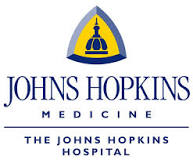Assessment of Primary Oxygenation and Airflow Measurement for Endoscopic Laryngeal Surgery
| Status: | Recruiting |
|---|---|
| Healthy: | No |
| Age Range: | 18 - Any |
| Updated: | 8/10/2018 |
| Start Date: | March 29, 2017 |
| End Date: | September 2021 |
| Contact: | Alexander Hillel, MD |
| Email: | ahillel@jhmi.edu |
| Phone: | 410-955-1654 |
This research is being done to determine the resistance across stenosis in the airway.
There is significant utility in objectively measuring airflow as subjects, undergoing
endoscopic laryngeal surgery, commonly have difficulties with airflow secondary to their
stenosis. Easier and quicker quantification will tailor diagnosis and treatment. In order to
obtain an objective measure of airflow in these participants, we will place a 20-gauge
angiocatheter needle into the airway. The catheter will be in situ for a short duration
during several spontaneous and non-spontaneous breaths. This will be achieved via the
existing tracheostomy stoma or percutaneously via the cricothyroid membrane. This technique
is commonly used to access the muscles of the larynx, however, the primary purpose will be to
measure airflow in this setting.
endoscopic laryngeal surgery, commonly have difficulties with airflow secondary to their
stenosis. Easier and quicker quantification will tailor diagnosis and treatment. In order to
obtain an objective measure of airflow in these participants, we will place a 20-gauge
angiocatheter needle into the airway. The catheter will be in situ for a short duration
during several spontaneous and non-spontaneous breaths. This will be achieved via the
existing tracheostomy stoma or percutaneously via the cricothyroid membrane. This technique
is commonly used to access the muscles of the larynx, however, the primary purpose will be to
measure airflow in this setting.
Inclusion Criteria:
- Patients 18 years or older that require outpatient endoscopic laryngeal airway
surgery, in the operating room, at a tertiary academic center.
Exclusion Criteria:
- Pregnancy (status will be determined by a urine test as part of standard clinical care
in the preoperative setting)
- Patients that are not cleared for surgery by the preoperative evaluation
- Patients with severe laryngotracheal stenosis
- Patients who are morbidly obese (BMI > 40)
- Patients with lung disease (asthma, COPD)
We found this trial at
1
site
Johns Hopkins Hospital Patients are the focus of everything we do at The Johns Hopkins...
Click here to add this to my saved trials
